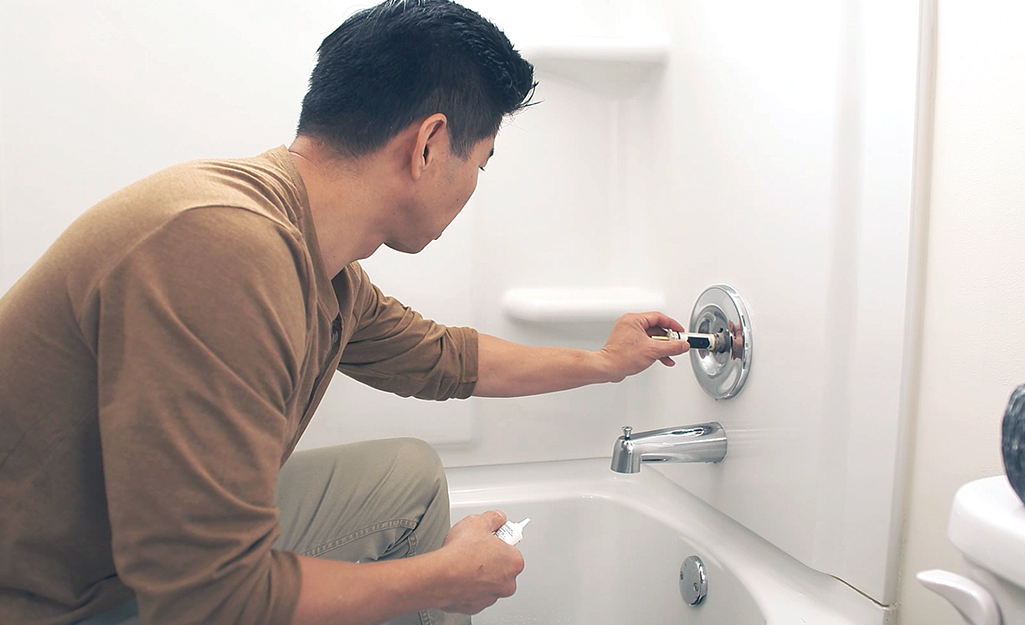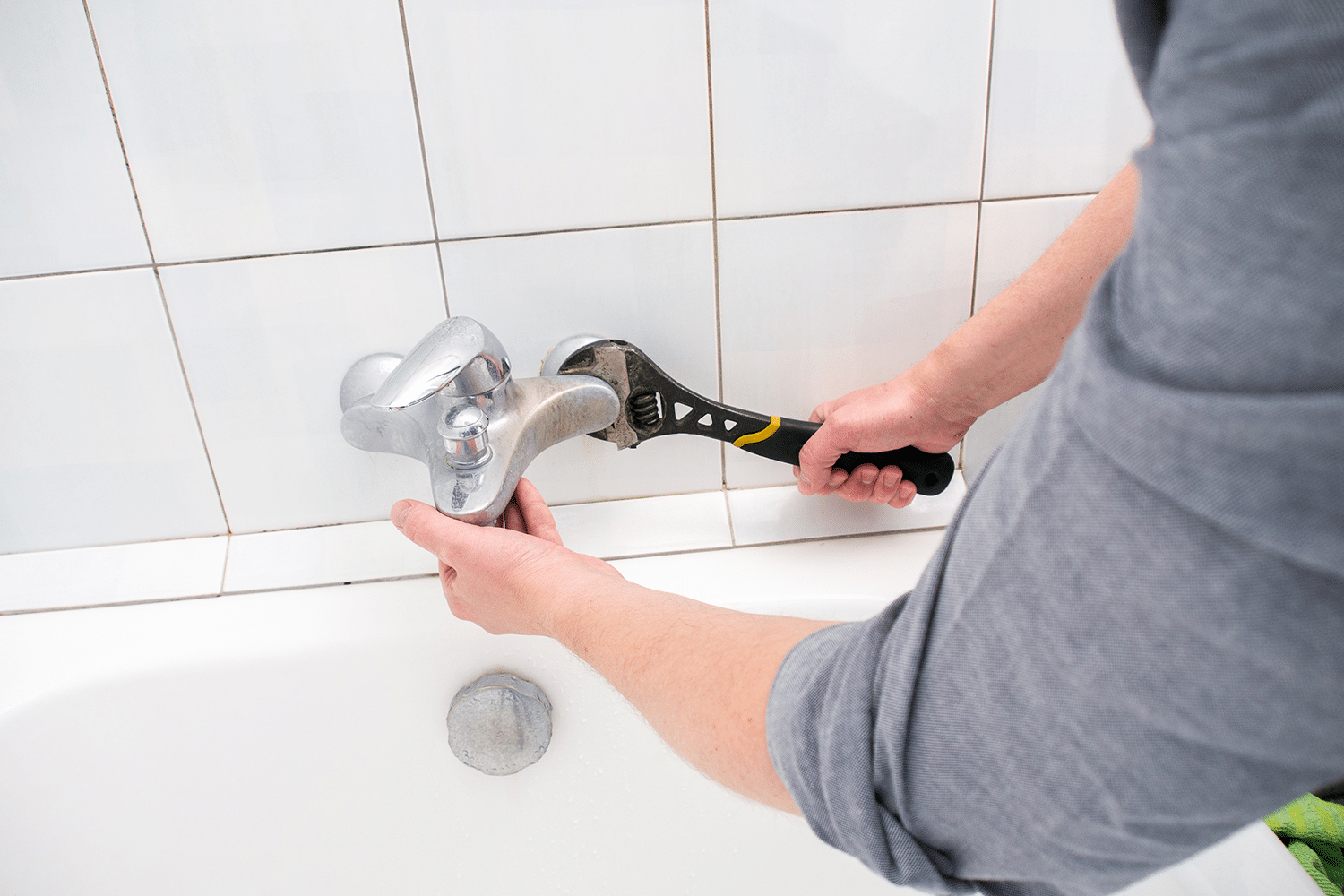Explanations Why It's Crucial to Repair a Dripping Faucet
Explanations Why It's Crucial to Repair a Dripping Faucet
Blog Article
We have come across this article on Why Are My Faucets Dripping (And Can I Fix It Myself)? below on the web and reckoned it made perfect sense to write about it with you on this page.

Leaking taps may feel like a minor inconvenience, however their influence surpasses simply the nuisance of the audio. From drainage to incurring unneeded financial expenses and health and wellness dangers, overlooking a leaking tap can result in various consequences. In this article, we'll delve into why it's important to address this typical household problem promptly and effectively.
Waste of Water
Environmental Effect
Leaking faucets contribute considerably to water waste. According to the Epa (EPA), a single faucet leaking at one drip per secondly can waste greater than 3,000 gallons of water per year. This not only stress water resources however likewise influences environments and wild animals dependent on them.
Step-by-Step Overview to Taking Care Of a Dripping Faucet
Tools Needed
Prior to trying to take care of a leaking tap, gather the required tools, consisting of a flexible wrench, screwdrivers, substitute parts (such as washers or cartridges), and plumber's tape.
Typical Faucet Issues and Their Solutions
Determine the type of faucet and the particular issue triggering the drip. Common troubles include damaged washers, corroded valve seats, or defective O-rings. Refer to producer directions or online tutorials for detailed assistance on repairs.
Financial Prices
Enhanced Water Bills
Beyond the ecological impact, dripping taps can pump up water bills substantially. The built up wastage in time equates right into greater energy expenditures, which can have been avoided with timely fixings.
Possible Home Damage
Furthermore, extended trickling can cause damage to components and surfaces surrounding the faucet. Water build-up can create staining, rust, and even structural problems if left ignored, resulting in additional repair work costs.
Health Problems
Mold And Mildew and Mold Growth
The consistent existence of moisture from a dripping faucet creates an excellent environment for mold and mildew and mold development. These fungis not only endanger interior air high quality but likewise present health dangers, specifically for people with respiratory conditions or allergies.
Waterborne Illness
Stagnant water in leaking taps can become a breeding ground for germs and other virus, increasing the threat of waterborne illness. Pollutants such as Legionella bacteria thrive in stationary water, possibly bring about serious illnesses when consumed or breathed in.
Do it yourself vs. Professional Fixing
Pros and Cons of DIY Repair
While some might attempt to deal with a leaking tap themselves, do it yourself repair work come with their own set of challenges. Without correct understanding and tools, DIY efforts can worsen the issue or cause insufficient repair services, prolonging the trouble.
Advantages of Working With an Expert Plumber
Working with a specialist plumber makes certain that the underlying reason for the trickling faucet is resolved properly. Plumbing professionals possess the proficiency and devices to identify and repair faucet concerns efficiently, saving time and reducing the threat of additional damages.
Ecological Responsibility
Individual Payment to Conservation
Taking responsibility for fixing dripping faucets aligns with broader initiatives towards water preservation and ecological sustainability. Every individual's actions jointly make a significant effect on maintaining precious resources.
Sustainable Living Practices
By focusing on punctual repairs and adopting water-saving habits, people add to lasting living techniques that profit both present and future generations.
Safety nets
Routine Maintenance Tips
To prevent trickling taps, carry out regular upkeep such as cleaning aerators, inspecting for leakages, and changing worn-out parts without delay. Additionally, take into consideration mounting water-saving devices or upgrading to a lot more effective fixtures.
Significance of Prompt Repairs
Resolving leaking taps as quickly as they're noticed stops further water waste and potential damage, eventually saving both water and cash in the future.
Impact on Property Worth
Understanding of Well-Maintained Residential Or Commercial Property
Keeping a residential or commercial property in good condition, consisting of resolving upkeep issues like leaking taps, boosts its regarded worth and desirability among potential buyers or tenants.
Impact on Resale Worth
Residences with well-kept plumbing fixtures, including faucets, command higher resale worths in the realty market. Dealing with dripping faucets can contribute to a favorable impression throughout property assessments and settlements.
Conclusion
Attending to a trickling faucet surpasses mere benefit; it's a crucial action toward conserving water, decreasing monetary costs, and safeguarding health and wellness and residential property. Whether with DIY repair services or specialist assistance, taking action to repair trickling faucets is a little yet impactful way to advertise responsible stewardship of resources and add to a healthier, extra lasting future.
How to Fix a Dripping or Leaky Faucet
A leaking faucet is one of the most common problems that homeowners encounter, but it being commonplace doesn’t make it any less annoying. The constant drip drip drip of a leaking bathtub faucet, showerhead, or sink tap can disturb your home’s serenity. Left neglected, a dripping faucet can also result in higher water bills and discoloration or mold growth in your sink or plumbing fixtures.
Fortunately, you don’t have to be a trained plumber to know how to stop a dripping faucet. With some basic tools, replacement parts, and a little patience, leaky faucet repair is a breeze. In this article, we’ll explain what causes dripping faucets and how you can fix them.
What Causes a Leaking Faucet?
Kitchen and bathroom faucets come in all manner of designs, but most involve some combination of valves, O-rings, seals, and washers. The O-ring is usually the weakest link, but any one of these pieces can wear down over time. Heat, moisture, temperature fluctuations, minerals, mold, and movement can contribute to warping and corrosion, breaking the watertight seal. This just comes with the territory of being a homeowner. Everything is always subject to wear and tear, and some component parts of your appliances and fixtures need to be replaced on occasion. At least replacement O-rings are cheap!
More rarely, dripping faucets can be a symptom of excessively high water pressure. Were this the case in your home, you would probably notice that the leak is not isolated to one faucet. Water pressure issues are harder to resolve on your own. We recommend contacting a professional plumber if you suspect your water pressure is too high.
How to Fix a Dripping Faucet
Pipe wrench or monkey wrench Allen wrench set Screwdrivers Old towel or rag Shut off the water.
Before you do anything, you need to turn off the water to keep from drenching your kitchen or bathroom. You should find a valve under the sink and against the wall. Once you’ve turned this valve, try turning the faucet on to confirm that the water source has been cut off.
If you can’t locate your local valve for the faucet you’re working on, you can always shut off the water to the house at the main valve. Of course, this will prohibit anyone from using the sinks, showers, or toilets while you’re working on the faucet that’s giving you trouble.
Plug or block the drain.
You’ll be disassembling the faucet and removing some small bits of hardware. Plug the drain with a stopper or rag to avoid the possibility of a small screw falling into your P-trap.
Take apart the faucet assembly.
There are several varieties of kitchen and bathroom faucets, each with its own manner of assembly. For detailed instructions on how to disassemble your faucet, you can refer to the fixture’s manual or contact the manufacturer. If you know whether you have a ball, disc, cartridge, or compression faucet, you can find detailed schematics online.
In general, you need to begin by removing the faucet handles. You might notice a small screw that you’ll need to remove with a screwdriver or Allen wrench. If you don’t see any visible securing hardware, it’s likely hidden under a decorative cap that can be unscrewed or popped off with flathead screwdriver.
Remove each piece methodically, consulting a schematic when necessary. Take notes or arrange the pieces in such a way to make it easier to correctly reassemble the faucet later.
Remove the cartridge.
Once you’ve removed the handles and securing hardware, you should be able to remove the valve cartridge or stem. Some cartridges will slide right out. Other faucet models will require you to loosen a nut with a pipe wrench before you can remove the valve stem.
Examine the exposed hardware.
With the cartridge or stem removed, inspect the component parts. Check the rubber O-rings for wear and tear. Also examine the seat washer for corrosion or other damage. These pieces are usually the responsible parties for a dripping faucet, but it’s worth inspecting the other component parts while you have the faucet disassembled.
Find replacement parts.
Once you’ve identified which faucet component has failed, find an identical replacement. Your local hardware store should have O-rings, seat washers, and other standard components in stock. If you have a luxury or uncommon faucet, you may have to contact the manufacturer for a replacement part.
It’s a good idea to take your old parts with you to the hardware store so you can compare them with the store’s inventory and be sure you’re purchasing the correct replacement.
Reassemble the faucet.
With your new parts in hand, reconstruct the faucet and handles. Don’t be tempted to overtighten screws or nuts. You might think this could create a better seal, but it can instead damage or bend a delicate part of the assembly and create a new problem for you.
Turn on the water and test the faucet.
The only thing left to do is test your work. Unplug the sink, turn the water back on, and try the faucet. Congratulate yourself on a job well done!
https://www.libertyhomeguard.com/how-to-fix-a-dripping-or-leaky-faucet/

I came across that write up about 4 Common Reasons for a Leaky Faucet while doing a search on the search engines. Sharing is nice. One never knows, you may just be doing someone a favor. Thanks a lot for taking the time to read it.
Report this page